England's Edward I had styled himself the Hammer of the Scots with good reason. The intervening decades had brought Scottish morale to an all time low. There was as much a psychological war to fight, as any on the battlefield.
Many ordinary Scots just wanted to give up. Accepting their vassal status in return for peace.
Edward I was now dead. But his son Edward II could call upon the same nobles and their armies; aged veterans of his father's campaigns, riding alongside sons eager to match their sires in valor and glory.
Robert the Bruce could not command the numbers, nor rely upon the resources, of his battle-hardened overlords in the south. The English would outnumber the Scots, at least three to one (maybe more), on the Battlefield of Bannockburn.
Then too was a personal level, whose pressures cannot be understated. Imagine a man, any man, whose wife, daughter and sisters had all been held hostage by the enemy for seven long years. Their lives and continuing good treatment rely upon his submission. Their execution and torture could easily result from his lack of compliance; a punishment for his rebellion.
Nor were these idle threats. Three of Robert's brothers had been captured by the English, during earlier bids for Scottish independence. Neil, Thomas and Alexander Bruce had all been hanged, drawn and quartered. It was only a veneer of chivalry which had saved the women.
As a husband, father and brother, Robert's instincts must have been to race into England and rescue them all. He had to have day-dreamed of such heroics. But as a statesman, he had a responsibility for his country's freedom. Even if much of the population sneered or feared such attempts.
The example of his brothers taught him quite eloquently his own Fate, if he should be captured too.
Robert Bruce was a human being, and that was what made him a hero.


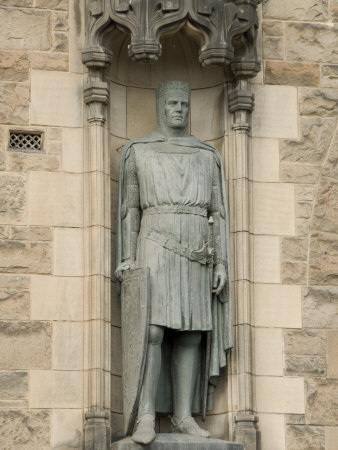



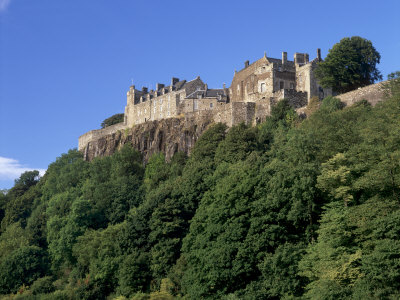





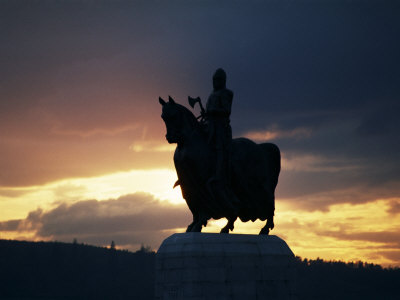








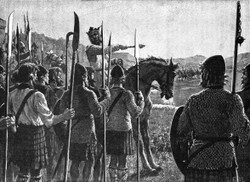

 St Tydecho's Churches in West Waleson 09/03/2014
St Tydecho's Churches in West Waleson 09/03/2014
 Goodies for an Outlander Premiere Partyon 03/06/2015
Goodies for an Outlander Premiere Partyon 03/06/2015
 Holocaust Memorial Day Interview with Rainer Höss, Grandson of Rudolf Architect of Auschwitzon 01/24/2015
Holocaust Memorial Day Interview with Rainer Höss, Grandson of Rudolf Architect of Auschwitzon 01/24/2015
 Romantic Valentine Gifts for an Outlander Fanon 01/16/2015
Romantic Valentine Gifts for an Outlander Fanon 01/16/2015

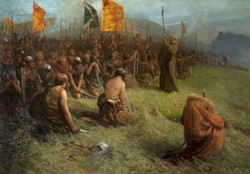
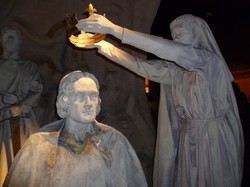
Comments
very nice post
thanx for an amazing post!!!!
Good post here
good Mobdro Apk file on your Windows PC making use of Bluestacks. So if you like to see films and tv collection making use of Mobdro application on your Windows pc, adhere to great.
good As soon as you see the login page, you'll see a number of alternatives to choose from. You can create a new account utilizing your email address and also a password nice.
I didn't know that he'd made it down as far as Preston. Thanks for that.
It wasn't just England. The Bruces also headed into Northern Ireland with a view to consolidating land, wealth and alliances. Given half a chance, I think King Robert could have been very imperial indeed.
He's undoubtedly a hero in terms of prising Scotland from the clutches of the English, but I remain very suspect about his motives thereon. It seems to me that it was always much more about Robert the Bruce than it was about Scotland.
Robert the Bruce did enter Northern England, but not to conquer, as he had the good sense not to go too far south, where he would have been overstretched. He plundered in the North East. In Lancashire, North West, he reached as a far as Preston [central Lancashire] where he demanded the town treasury as compensation. When it was given he left the town unscathed. This seems to have been the case with Bruce. He was not cruel to English, but as his ravaging of a Scottish earldom that had refused to support him shows, he reserved his wrath for traitors.
I should imagine that every child in Scotland will have heard about Bannockburn, whether through school, stories told by their parents or constant reference in the newspapers. Whether it's the proper history, or a very sketchy 'Yay! We Won!' rhetoric, is a different matter entirely.
Ah, okay I made the correlation but I was wondering if they were even similar beyond that. So is this a war history most people from Scotland will be very familiar with? I know the Revolutionary war is taught like every single year of school throughout grade school and again in American History in high school.
Teresa - As you know yourself, you'd do anything to save your family. But sometimes there has to be a streak of pragmatism in the equation too. If Robert had charged into England after them, he'd have been overwhelmed, arrested, then hanged, drawn and quartered. He knew that for a fact, as it had happened to his brothers. Who would have saved them if he was dead?
So much of the story of the latter part of the Scottish War of Independence (and particularly Bannockburn) is Robert the Bruce being swept along by circumstances. He lit a fire which he couldn't put out. Was he a hero? Possibly, because history made him so. Was he brave? Yes, I think so. Because he saw what was there, panicked about it, and did it anyway.